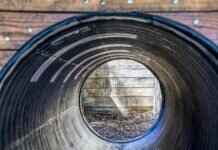This comprehensive guide will help you understand how to select the best windshield wipers for your vehicle, ensuring optimal visibility and safety during adverse weather conditions. Choosing the right windshield wipers is not just a matter of convenience; it is essential for your safety on the road.
What Are the Different Types of Windshield Wipers?
Understanding the types of windshield wipers available is crucial for making an informed choice. The main types include:
- Conventional Wipers: These are the traditional wipers that consist of a rubber blade attached to a metal frame. They are cost-effective but may not perform as well in extreme weather.
- Beam Wipers: Featuring a one-piece design, beam wipers offer better contact with the windshield, making them ideal for heavy rain or snow.
- Hybrid Wipers: Combining the features of conventional and beam wipers, hybrid wipers provide flexibility and enhanced performance.
How Do I Choose the Right Size for My Windshield Wipers?
Selecting the correct size for your windshield wipers is essential for effective performance. To ensure you have the right fit:
- Check Your Vehicle’s Manual: Most manuals will specify the correct wiper sizes for your model.
- Measure Your Existing Wipers: If you don’t have the manual, measure the length of your current wipers.
Why Is Wiper Size Important?
The size of your windshield wipers directly impacts their ability to clear water and debris effectively. Using the proper size ensures that your wipers can cover the entire windshield, providing maximum visibility.
Measuring Your Windshield Wipers
To ensure you select the right wiper size, accurate measurement is key. Follow these steps:
1. Lift the wiper arm away from the windshield.2. Measure the length of the wiper blade from end to end.3. Repeat for the other wiper, as sizes may differ.
Finding the Right Size for Your Vehicle
Once measurements are taken, knowing where to find the correct size is vital. You can check local auto parts stores or online retailers that provide size charts based on vehicle make and model.
What Features Should I Look for in Windshield Wipers?
When choosing windshield wipers, various features can enhance performance. Consider the following:
- Material: Look for wipers made from high-quality rubber that can withstand wear and tear.
- Design: Opt for wipers with a sleek aerodynamic design to reduce wind lift and noise.
- Additional Technologies: Some wipers come with special coatings that repel water or prevent ice buildup.
How Often Should I Replace My Windshield Wipers?
Regular maintenance of your windshield wipers is important for safety. Experts recommend replacing wipers every 6 to 12 months, depending on usage and environmental conditions.
Signs of Worn-Out Wipers
Recognizing the signs of worn-out wipers can prevent dangerous driving conditions. Common indicators include:
- Streaks or smears on the windshield.
- Chattering or skipping during operation.
- Cracked or torn rubber blades.
Replacement Frequency Recommendations
Understanding how often to replace your windshield wipers can prolong their lifespan. If you frequently drive in harsh weather conditions, consider replacing them more often. Regular inspections can also help identify when it’s time for a change.

What Are the Different Types of Windshield Wipers?
When it comes to maintaining your vehicle, understanding the different types of windshield wipers is essential. Choosing the right wipers ensures clear visibility, especially during inclement weather. In this section, we will delve into the three primary types of windshield wipers: conventional, beam, and hybrid wipers, highlighting their features, advantages, and suitable applications.
Conventional wipers, also known as frame-style wipers, are the most common type found in many vehicles. They consist of a rubber blade attached to a metal frame, which allows for flexibility and adaptability to the windshield’s shape. This type of wiper is typically less expensive and easier to replace.
- Advantages: Cost-effective, widely available, and easy to install.
- Disadvantages: May not provide as even pressure as other types, leading to streaking or missed spots.
Beam wipers are designed without a traditional frame, utilizing a single, flexible beam of material that conforms better to the windshield surface. This design allows for uniform pressure across the entire blade, improving performance in harsh weather conditions.
- Advantages: Superior contact with the windshield, reduced noise, and less streaking.
- Disadvantages: Generally more expensive than conventional wipers.
Hybrid wipers combine the features of both conventional and beam wipers. They have a sleek, aerodynamic design with a sturdy frame for stability and a flexible blade for optimal contact. This type offers the best of both worlds, making them a popular choice among drivers.
- Advantages: Enhanced performance, reduced wind lift, and improved visibility.
- Disadvantages: Higher cost compared to conventional models.
In summary, selecting the right type of windshield wiper is crucial for maintaining visibility and safety while driving. It’s important to consider the weather conditions you frequently encounter, your budget, and the specific needs of your vehicle when making your choice. Each type of wiper has its unique benefits and drawbacks, making it essential to evaluate them carefully to ensure you make an informed decision.

How Do I Choose the Right Size for My Windshield Wipers?
Choosing the right size for your windshield wipers is a critical step in ensuring their effective performance. The right size not only enhances visibility during rain or snow but also prolongs the lifespan of the wipers themselves. In this section, we will provide you with a comprehensive guide to measure and select the appropriate size for your vehicle’s windshield wipers.
The size of your windshield wipers plays a significant role in their ability to clear water and debris from your windshield. Using the correct size ensures that the wipers cover the entire windshield area without leaving any blind spots. This is essential for maintaining optimal visibility and safety while driving.
To accurately measure your existing wipers, follow these simple steps:
- Step 1: Park your vehicle on a level surface and ensure the wipers are in the “off” position.
- Step 2: Use a measuring tape to measure the length of each wiper blade from end to end.
- Step 3: Take note of the measurements, as different wipers may have different lengths for the driver and passenger sides.
- Step 4: If you cannot find the size, consult your vehicle’s owner manual for the manufacturer-recommended sizes.
Once you have your measurements, the next step is to find the right size. Here are some resources to help you:
- Online Retailers: Many online auto parts stores allow you to input your vehicle’s make and model to find compatible wiper sizes.
- Local Auto Parts Stores: Visiting a local store can provide you with the opportunity to physically compare wiper sizes and ask for assistance from knowledgeable staff.
- Manufacturer’s Website: Check the manufacturer’s website for specific recommendations based on your vehicle’s year, make, and model.
If you encounter difficulty finding the exact size, consider the following:
- Adjustable Wipers: Some brands offer adjustable wipers that can fit a range of sizes.
- Consult a Professional: If you’re unsure, seeking help from a professional mechanic can ensure you get the right fit.
In conclusion, selecting the right size for your windshield wipers is crucial for maintaining visibility and safety on the road. By following the measurement guidelines and utilizing available resources, you can ensure that your wipers are the perfect fit for your vehicle. Remember, regular checks and maintenance will help you stay safe during inclement weather.
Why Is Wiper Size Important?
The size of your windshield wipers plays a crucial role in their performance and effectiveness. When it comes to ensuring clear visibility during rain or snow, using the proper size is essential. This section will delve into the reasons why selecting the right wiper size is important for optimal functionality.
First and foremost, windshield wipers are designed to fit specific dimensions of a vehicle’s windshield. If the wipers are too small, they may not cover the entire surface area, leaving streaks or uncleaned sections that can obstruct your view. Conversely, if the wipers are too large, they may extend beyond the windshield, causing potential damage to the wiper arms or even the windshield itself.
Furthermore, the curvature of the windshield is another factor that affects wiper performance. Different vehicles have varying windshield shapes, and using wipers that match these curves ensures that the rubber blade maintains proper contact with the glass. This contact is vital for effective water removal and debris clearing. A well-sized wiper will conform to the windshield’s shape, allowing it to efficiently wipe away rain, snow, and dirt.
Another important consideration is the mechanical function of the wiper system. Wipers operate through a series of connected arms and pivots. If the wipers are not the correct size, they may not move correctly across the glass, leading to increased wear and tear on the wiper motor and other components. This misalignment can also result in premature failure of the wiper blades, necessitating more frequent replacements.
In addition to performance, using the correct size wipers also impacts safety. Visibility is paramount when driving, especially in adverse weather conditions. A compromised view due to ineffective wipers can lead to dangerous driving situations. By ensuring that your wipers are the right size, you are taking a proactive step towards maintaining a safe driving environment.
When selecting windshield wipers, it is also essential to consider the climate and driving conditions you typically encounter. For instance, if you live in an area with heavy rainfall or snow, investing in high-quality, appropriately sized wipers can make a significant difference in your overall driving experience.
To summarize, the importance of wiper size cannot be overstated. The right size ensures complete coverage, maintains proper contact with the windshield, enhances the longevity of the wiper system, and most importantly, promotes safe driving conditions. Always refer to your vehicle’s manual or consult with a professional to determine the best size for your windshield wipers.
Measuring Your Windshield Wipers
When it comes to maintaining your vehicle, ensuring that your windshield wipers are in optimal condition is essential for safety and visibility. One of the most critical steps in this process is accurately. This section will provide a comprehensive, step-by-step guide to help you measure your existing wipers effectively.
Choosing the correct size of windshield wipers is vital for their performance. Wipers that are too short may not cover the entire windshield, while those that are too long can lead to inefficient wiping and potential damage. Accurate measurement ensures that you select wipers that provide maximum coverage and efficiency.
- Gather Necessary Tools: You will need a measuring tape or a ruler, and possibly a notepad to jot down your measurements.
- Check Your Owner’s Manual: Before measuring, consult your vehicle’s owner manual. It often contains the specific sizes recommended for your make and model.
- Measure the Driver’s Side Wiper: Extend the wiper arm away from the windshield. Measure from the center of the wiper pivot to the tip of the blade. Record this measurement.
- Measure the Passenger’s Side Wiper: Repeat the same process for the passenger side wiper. It’s common for these two wipers to be different sizes.
- Check the Rear Wiper (if applicable): If your vehicle has a rear windshield wiper, measure it in the same manner.
- Ensure Wipers are Clean: Dirt or debris can affect the measurement, so clean your wipers before measuring.
- Consider Blade Type: Different types of wiper blades (e.g., conventional, beam) may vary in length, so take note of the type you currently have.
- Double-Check Your Measurements: It’s advisable to measure twice to ensure accuracy before making a purchase.
Once you have your measurements, you can find the right size wipers at various places:
- Auto Parts Stores: Many stores have size charts that can help you find the right fit based on your measurements.
- Online Retailers: Websites often allow you to filter results by size and vehicle make, making it easier to find the correct wipers.
- Manufacturer Websites: Check the manufacturer’s website for specific recommendations based on your vehicle model.
By following these steps and tips, you can ensure that you select the right windshield wipers for your vehicle, enhancing your safety and visibility on the road. Remember, proper maintenance of your wipers is just as important as measuring them accurately.
Finding the Right Size for Your Vehicle
When it comes to ensuring clear visibility while driving, finding the right size windshield wipers for your vehicle is crucial. After measuring your current wipers, the next step is to locate the correct replacement size. This section will guide you through various resources and tools that can assist you in making the right choice.
First and foremost, consulting your vehicle’s owner manual is a reliable starting point. Most manuals provide specific details about the recommended wiper sizes for your make and model. If you don’t have access to your manual, many manufacturers have this information readily available online on their official websites.
- Online Retailers: Websites like Amazon, AutoZone, and Advance Auto Parts allow you to search for wipers based on your vehicle’s make and model. By entering your car details, you can easily find the appropriate sizes.
- Wiper Size Charts: Many automotive websites and forums offer comprehensive wiper size charts. These charts can be incredibly useful for cross-referencing the sizes with various brands and types of wipers.
- In-store Assistance: Visiting an auto parts store can provide you with hands-on help. Staff members are often knowledgeable about different wiper sizes and can assist you in finding the correct fit.
Additionally, some manufacturers provide wiper size finders on their websites. These tools allow you to input your vehicle information and receive recommendations for compatible wipers.
Another effective approach is to measure your existing wipers directly. If you have your old wipers on hand, you can measure their length from end to end. This will give you a clear idea of the size you need when shopping for replacements. However, keep in mind that different brands may have slight variations in size, so always double-check compatibility.
It’s also worth noting that some vehicles may require different sizes for the driver and passenger side wipers. Be sure to verify the specifications for both sides to ensure optimal performance.
In summary, when it comes to finding the right size for your windshield wipers, utilizing a combination of resources such as your vehicle’s owner manual, online retailers, and in-store assistance can significantly simplify the process. By taking these steps, you can ensure that you choose the correct size wipers, enhancing your visibility and safety on the road.
What Features Should I Look for in Windshield Wipers?
When selecting windshield wipers, it’s essential to consider various features that can significantly enhance their performance and durability. The right wipers ensure optimal visibility and safety, especially during adverse weather conditions. Below, we will explore the key features to look for when choosing windshield wipers for your vehicle.
The material of the windshield wipers plays a crucial role in their effectiveness. Most wipers are made from rubber, silicone, or a combination of both. Rubber wipers are affordable and provide decent performance, but they may wear out quickly under harsh conditions. Silicone wipers, on the other hand, are more durable and resistant to UV rays, making them a better choice for long-term use. Additionally, some premium wipers feature a graphite coating that reduces friction and enhances performance.
The design of windshield wipers can greatly affect their ability to clear water and debris efficiently. Beam wipers have a sleek, curved design that allows for better contact with the windshield, especially at high speeds. In contrast, conventional wipers have a more traditional design that may not provide the same level of performance. When choosing wipers, look for those that feature an aerodynamic design, as they help reduce wind lift and improve wiping efficiency.
Many modern windshield wipers come equipped with advanced technologies that enhance their functionality. Some key technologies to consider include:
- Smart Technology: Some wipers can adapt their speed based on the intensity of rainfall, providing optimal performance in varying conditions.
- Heated Wipers: These wipers feature a heating element that helps prevent ice and snow buildup, making them ideal for colder climates.
- Noise Reduction Features: Look for wipers designed with noise-reducing technology to minimize the sound during operation, ensuring a quieter driving experience.
Another important feature to consider is how easy it is to install the windshield wipers. Many brands offer quick-release mechanisms that allow for hassle-free installation and removal. This feature is particularly beneficial for those who prefer to change their wipers themselves without needing professional assistance.
Ensure that the windshield wipers you choose are compatible with your specific vehicle make and model. Many manufacturers provide compatibility charts, making it easier to find the right fit. Using the correct wiper size is essential for optimal performance, as improperly sized wipers may not clear the windshield effectively.
In summary, when choosing windshield wipers, consider the material, design, additional technologies, ease of installation, and compatibility with your vehicle. By focusing on these features, you can enhance your driving experience and ensure safety on the road, especially during inclement weather.

How Often Should I Replace My Windshield Wipers?
When it comes to maintaining your vehicle, windshield wipers often take a backseat in terms of attention. However, they play a critical role in ensuring your safety while driving, especially during adverse weather conditions. Understanding how often to replace your windshield wipers is essential for maintaining clear visibility and a safe driving experience. This section addresses the recommended replacement intervals and the signs that indicate it’s time for a change.
Generally, it is advisable to replace your windshield wipers every 6 to 12 months. The lifespan of wipers can vary based on several factors, including:
- Usage: Frequent use, especially in heavy rain or snow, can wear out wipers faster.
- Climate: Extreme temperatures, both hot and cold, can degrade wiper materials.
- Quality: Higher-quality wipers may last longer than budget options.
Even if you haven’t reached the recommended replacement interval, it’s essential to monitor your windshield wipers for signs of wear. Here are some common indicators:
- Streaking: If your wipers leave streaks or fail to clear the windshield effectively, it’s a sign they need replacing.
- Chattering: If the wipers make a chattering noise while in use, it indicates that the rubber is worn out or damaged.
- Visible Damage: Check for cracks, splits, or any visible damage on the rubber blades.
- Skipping: If the wipers skip across the windshield instead of gliding smoothly, they may need to be replaced.
Understanding the factors that affect the lifespan of your windshield wipers can help you determine when to replace them. Here are some key considerations:
- Environmental Conditions: Exposure to harsh weather conditions, such as extreme heat or cold, can shorten the lifespan of your wipers.
- Maintenance: Regularly cleaning your wipers and windshield can help prolong their life. Dirt and debris can cause wear and tear.
- Quality of Wipers: Investing in high-quality wipers can provide better performance and longevity compared to cheaper alternatives.
To maximize the lifespan of your windshield wipers, consider the following tips:
- Regular Cleaning: Clean the wiper blades with a soft cloth and soapy water to remove dirt and grime.
- Inspect Frequently: Regularly check for signs of wear and tear to catch issues early.
- Use Proper Wiper Fluid: Ensure you use a quality windshield washer fluid to help maintain blade performance.
In conclusion, maintaining your windshield wipers is a crucial aspect of vehicle safety. By understanding the recommended replacement intervals and recognizing the signs of wear, you can ensure that your wipers are always performing at their best. Regular inspections and proper care will not only enhance visibility but also contribute to a safer driving experience.
Signs of Worn-Out Wipers
Windshield wipers are essential for maintaining clear visibility during inclement weather. However, over time, they can wear out and become less effective. Recognizing the is crucial for ensuring your safety on the road. Below are some common indicators that your windshield wipers need replacing:
- Streaking on the Windshield: If your wipers leave streaks or smudges on the glass, it may indicate that the rubber blade is worn or damaged. This can obstruct your view, especially during heavy rain.
- Chattering or Skipping: Wipers that skip or chatter across the windshield are a clear sign of wear. This could be due to a loss of flexibility in the rubber or a misalignment of the wiper arm.
- Visible Cracks or Tears: Inspect the rubber blades for any visible signs of damage, such as cracks, tears, or chunks missing. These defects can significantly reduce the wipers’ effectiveness.
- Noise While Operating: If you hear a squeaking or grinding noise when your wipers are in use, it may indicate that the blades are not making proper contact with the windshield, which can lead to further damage.
- Wipers Not Returning to the Rest Position: If your wipers fail to return to their normal resting position after use, it could be a sign of a malfunctioning wiper motor or an issue with the wiper linkage.
- Increased Water Beading: If water is not being effectively cleared away and tends to bead up on the windshield, it may be time to replace your wipers. This can lead to dangerous driving conditions.
Regularly checking your windshield wipers for these signs can help prevent dangerous driving situations. If you notice any of the above indicators, it is advisable to replace your wipers promptly. Not only does this improve visibility, but it also enhances overall driving safety.
In addition to recognizing the signs of worn-out wipers, it is also important to consider the environmental conditions in which you drive. Factors such as extreme temperatures, UV exposure, and road debris can accelerate the wear of your wipers. Keeping an eye on their condition, especially after harsh weather, can ensure that you maintain optimal visibility on the road.
By staying proactive about the condition of your windshield wipers, you can enhance your driving experience and ensure that you are prepared for any weather conditions that may arise.
Replacement Frequency Recommendations
When it comes to ensuring your safety on the road, maintaining your windshield wipers is crucial. One of the key aspects of this maintenance is understanding how often to replace your windshield wipers. This knowledge can not only enhance your visibility during adverse weather conditions but also prolong the lifespan of your wipers.
Typically, it is recommended to replace your windshield wipers every 6 to 12 months. However, this timeframe can vary based on several factors, including:
- Usage Frequency: If you frequently drive in rainy or snowy conditions, your wipers may wear out faster.
- Environmental Conditions: Exposure to extreme temperatures, UV rays, and road debris can significantly impact the lifespan of your wipers.
- Wiper Material: The type of material used in your wipers can also determine how long they last. Premium wipers often have enhanced durability.
Being aware of the signs that your windshield wipers need replacing is essential for maintaining visibility. Look for the following indicators:
- Streaking: If your wipers leave streaks on the windshield, they may not be making proper contact.
- Chattering: A chattering sound while the wipers are in operation often indicates that the rubber is worn or damaged.
- Cracks and Tears: Inspect the rubber blades for any visible signs of wear, such as cracks or tears.
- Skipping: If the wipers skip across the windshield instead of gliding smoothly, it’s time for a replacement.
To extend the life of your windshield wipers, consider the following tips:
- Regular Cleaning: Keep your wipers clean by wiping them with a soft cloth and a mild detergent to remove dirt and debris.
- Avoid Using Wipers on Dry Glass: Using wipers on a dry windshield can cause unnecessary wear.
- Store Your Vehicle in a Garage: Protecting your vehicle from harsh weather can help maintain the integrity of the wiper material.
By understanding how often to replace your windshield wipers and recognizing the signs of wear, you can ensure optimal performance and safety while driving. Regular maintenance and timely replacements will not only enhance your visibility but also contribute to a safer driving experience.
Frequently Asked Questions
- How do I know which type of windshield wipers to choose?
Choosing the right type of windshield wipers is crucial for effective performance. Consider factors like your driving conditions and the climate in your area. Conventional wipers are great for everyday use, while beam wipers offer better performance in heavy rain or snow.
- What is the best way to measure my windshield wipers?
To measure your windshield wipers accurately, simply take a tape measure and measure the length of the existing wipers from end to end. This will give you the size you need to look for when purchasing replacements.
- How often should I replace my windshield wipers?
It’s recommended to replace your windshield wipers every 6 to 12 months, depending on usage and environmental factors. If you notice streaking or skipping while wiping, it’s definitely time for a change!
- What signs indicate that my wipers need replacing?
Common signs of worn-out wipers include squeaking noises, streaks on the windshield, or if they fail to clear water effectively. If you notice any of these, it’s best to get new wipers to ensure safety on the road.
- Can I install windshield wipers myself?
Absolutely! Installing windshield wipers is a DIY task that most people can handle. Just follow the instructions that come with your new wipers, and you’ll have them on in no time.














